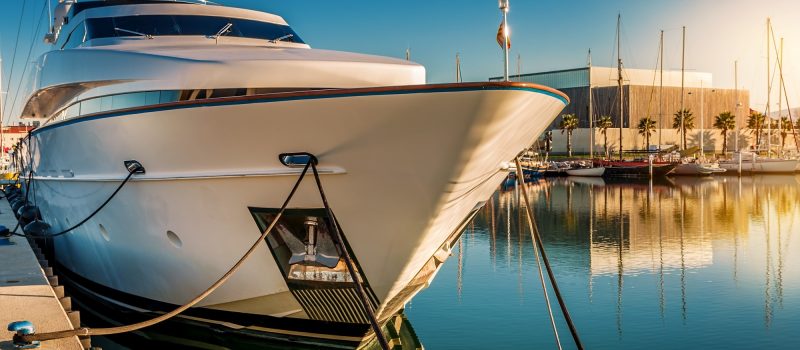Instead of spending time in virtual reality, wishing you were on a boat, make your dreams a reality.
Here’s a great guide to marine anchors with everything you need to know to get started. You’re ready to set sail!
Factors in Your Choice
Because there are many factors that affect your choice in anchors, it is wise to buy more than one type of anchor. Of course, you have to consider space and storage, but carrying at least a couple anchors helps you prepare for any situation.
Type of Bottom
Are you sailing over a sandy bottom or mud? Or is it rock, coral, or grass? Whatever the bottom below, you need an anchor that will grab and hold on.
Some anchors tear out of grass easily, while others hook into rocky terrain. Anchors can also be “fouled,” or prevented from setting if something gets in their way or catches on the road as the anchor falls to the bottom. Large amounts of seaweed or other obstacles are typical culprits for this.
Wind Conditions
Some anchors hold really well unless the boat drifts back the way it came, and then the anchor rode (the rope or chain that attaches the anchor to the boat) can catch on the anchor and pull it out.
Boat Windage
Windage is the way a boat’s surface area affects the pressure (or load) it puts on the anchor. Generally, the longer or bigger the boat, the heavier the load on the anchor.
Unless the wind pulls hard on the boat, the relationship between windage and anchor load is usually proportional. The minute you add in high winds, the load on the anchor goes up almost four times, instead of double.
Sea State
The sea state referred to in marine forecasts refers to the chop of the water, or wind waves. Sea state is a description but translates directly to an expected height of the water.
Wind waves come from local winds, but there are also waves known as swells, or rolls. These waves originate in the distance, farther out to sea. Make sure to take swells into account as well as wind waves.
Significant waves, or combined waves, are waves that are larger because they are both a chop and a roll. You can expect significant waves every 2 hours or so if the waves are 3-5 feet (measured from trough to crest).
Based on the marine forecast, you can determine which type of anchor will be best for your voyage. Always check the weather before you take the boat out.
Types of Marine Anchors
It’s important to pick a type of anchor that will be heavy enough to hit the bottom, the right shape not to get caught in weeds, and hearty enough to hold.
Weight
Lightweight anchors are pretty popular because they still hold a boat well despite appearances. This type of anchor is also called a fluke (or Danforth).
These hold well on a muddy or sandy bottom, and some models give you the ability to set the angle, which can help with mucky terrain.
They also have a lot of holding power in sand or mud, even in storms. You might want a second anchor in case if you anchor around a lot of other boats.
Weight goes up as the anchor’s size increases. You need to choose an anchor that is the right proportion to your boat size. Larger boats need larger anchors to hold them in place.
Shape
A fluke has multiple points of connection, so it is less likely to pull out on its own. However, if the wind is right and the boat drifts in reverse of the way the anchor was set, it can pull out.
A plow anchor has a scoop design, meaning that instead of multiple hooks like a traditional anchor, there is only one point on the anchor that can set into the bottom.
These types of anchors reset into the bottom on their own with ease. If your boat drifted the right direction for the anchor to pull out, it would not be as much of a problem because it would likely take care of the problem itself.
In windy conditions, try using two anchors. You can use two of the same, or one of each kind. Either way, the boat is less likely to swing and drag with two anchor points.
Strength
Anchors are usually made from different types of metal. The type of metal can determine the weight, but it also affects how strong the anchor is. Galvanized steel is cheaper, but also very strong. However, it can be heavy.
If weight is important to you, a lighter metal like an aluminum-magnesium alloy might be a better choice.
Anchor Rode
After you find your anchor, you need to pick a rode. You need something that will be effective, set and hold the boat without wavering.
Rope/Chain
Some rodes combine nylon and chain. Nylon is very flexible, and the elasticity helps absorb any temporary extra load from winds. Make sure to buy medium-lay rope, because the extra twists in it (compared to soft-lay) will hold together better.
Chain
A chain is heavier than nylon rope, so the anchor will fall to the bottom faster than if you choose a nylon rode.
If you choose to go with a chain rode, we like the DaiHan Anchor Chain because it gets the job done. Whatever you choose, make sure to find something heavy. The heavier the chain is, the better the set and hold.
You must also consider scope when choosing a rode. Scope is the ratio between the distance to the bottom and the length of the rode. Chain rodes sometimes require less scope.
Set Sail
Are you ready to select your anchor and rode? Now that you know all about marine anchors, you are all set to choose your equipment and get out on your boat. For more information about anchors, visit our website.

